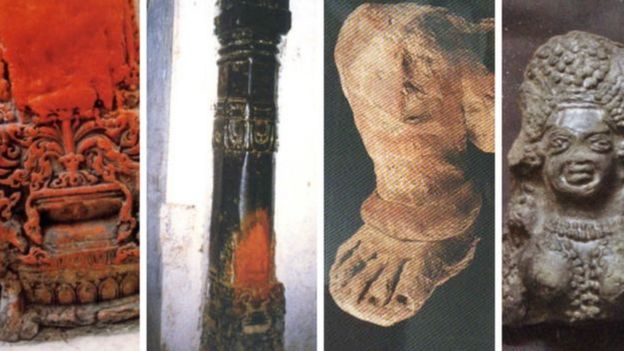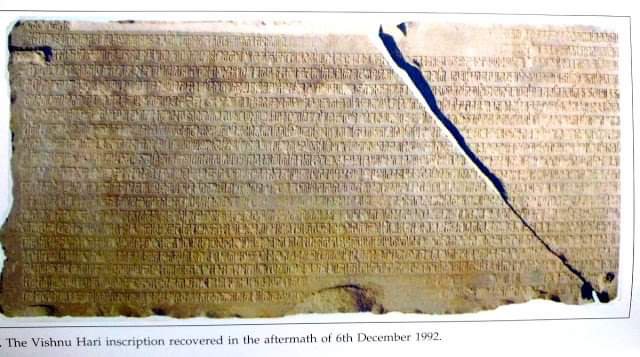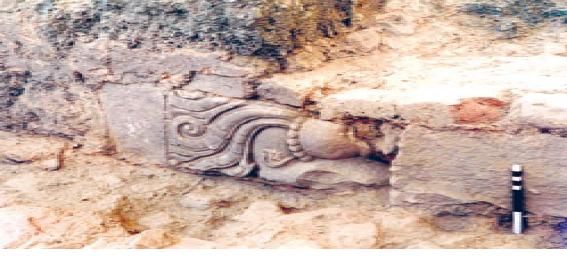A
Apoorva Devanshi
Guest
On November 9th 2019, the Supreme Court ruled in the favour of the Ram Janmabhoomi Nyas (Ram Mandir). Granting them the ownership of the 2.77 acre of disputed land in Ayodhya. The court compensated and granted the Muslim side five acres of land in a prominent location to build a mosque.
The Supreme Court cited the report by the Archaeological Survey of India (ASI) in its ruling. It noted that the Babri Masjid, which was erected on the disputed site and demolished in 1992, was not constructed on vacant land. There was proof of the existence of a temple-like structure on the property prior to the mosque’s construction.
The then Director General Prof. B.B. Lal of Archeological Survey of India conducted the first most significant excavations. He led a team of 9 archeologists including K.K. Muhammed. He also directed the excavations at a number of locations connected to the Ramayana, including Ayodhya, Nandigram, Shringverpur, Bharadwaj, Chitrakoot, etc. between 1968-1977.

Image by K.K. Muhammed

Apart from this Literary evidences which prove the existence of Ram Mandir and how Hindus continued worshipping at that place are-

It was the due to the relentless endeavors of Padma Bhushan B.B Lal and other archeologists like K.K Muhammed who gave mounting evidences that the Supreme Court ruled in the favour of Hindus in the Ayodhya dispute case. Though the ASI excavation report hasn’t been made public but while speaking to the reporters. Former Union Culture Minister Prahlad Patel’s made a statement that the ASI report, which was filed with the Supreme Court following excavation at the Ram Janmabhoomi-Babri Masjid site, will be turned into a book.
The post Unearthing History-Archaeological Evidences of Ram Mandir appeared first on The Jaipur Dialogues.
Continue reading...
The Supreme Court cited the report by the Archaeological Survey of India (ASI) in its ruling. It noted that the Babri Masjid, which was erected on the disputed site and demolished in 1992, was not constructed on vacant land. There was proof of the existence of a temple-like structure on the property prior to the mosque’s construction.
First ASI Excavation-
The then Director General Prof. B.B. Lal of Archeological Survey of India conducted the first most significant excavations. He led a team of 9 archeologists including K.K. Muhammed. He also directed the excavations at a number of locations connected to the Ramayana, including Ayodhya, Nandigram, Shringverpur, Bharadwaj, Chitrakoot, etc. between 1968-1977.
Key Evidences Found-
- Trenches were dug along the western and southern side of the mosque. While excavating he found various artifacts, including Northern Black Polish ware dating back to the 7th century B.C. He also found around 12 pillars and pillar bases oriented in the cardinal “North-South” and “East-West” direction. They had “Poorna Kalasha” at the base along with Motifs, Asta-Mangalam Chinha and Hindu deities. He stated that the pillars were not integral part of the Masjid but were foreign to it.

Image by K.K. Muhammed
- In order to determine how old the site is, Professor Lal dug up to fourteen trenches at various locations. The history of the township was then discovered to be at least three thousand years old, if not older. When viewed in the context of 20 black stone pillars—16 of which were discovered to have been reused—and which serve as pier cornerstones for the contentious “mosque”. B.B Lal concluded that the pillar bases belonged to a Hindu temple that existed somewhere between the 12th and the 16th century.
- He also discovered a door jamb adorned with ornamental motifs of Purnaghattas, Kirtimukhas, Yakshas, Yakshis, and double lotus flowers, among other Hindu icons.
Second Excavation-
- After that, Hari Manjhi and BR Mani carried out archeological excavations on behalf of the Archaeological Survey of India during the 2002–03 session. The ASI report recorded that the second excavation discovered 17 rows containing more than 50 pillar bases.
- They found a 1.64-meter-tall decorated black stone pillar with vaksha figurines on four corners. Along with multiple “pillar bases,” several brick walls” and “Sanskrit inscription of on stone.” A staircase and two columns made of black basalt “bearing fine decorative carvings with two cross-legged figures on a bloomed lotus with a peacock” were other features.
- The bricks used in the perimeters were found to be older than Babur’s reign. These walls have gorgeous stone pieces with intricately carved Hindu decorations like lotuses, Kaustubh jewels, alligator facades, etc. The “Makar Pranali” was excavated and it was found to belong exclusively to the temple. They also found “Kalash” on top of the temple and below it “Amalka”. The “Grivah” and “Shikhara” sections of the north Indian temple were located beneath the “Amalka”.
- They found an octagonal holy fireplace known as Yagna Kund. The excavations revealed numerous elaborate fragments of Kasauti stone pillars. They found around 263 pieces of terracotta idols of saints, serpents other divine figures. Along with this, they found a wall superimposed on another.
- The likelihood of a Buddhist or Jain building at the location was ruled out due to the lack of any Buddha or Tirthankara images. Also no Buddhist or Jains remains were found in the disputed area.
- Following the aftermath of the demolition of the mosque. A 1.10x.56 meter slab with the inscription ‘Vishnu Hari Sheela Phalak’ was discovered in two pieces. It clearly states that the temple was dedicated to the incarnation of Vishnu Vishnu that killed both the person with ten heads and Bali.

Other Evidences-
Apart from this Literary evidences which prove the existence of Ram Mandir and how Hindus continued worshipping at that place are-
- In 1787 Anno Vikrami, or 1730 A.D., Guru Nanak visited Ayodhya and said to his Muslim disciple Mardana, “Mardania! eh Ajudhia nagari Sri Ramachandraji Ji ki hai,”. Translation- “Mardana! Sri Ramachandra Ji owns this city of Ayodhya.” Therefore, let’s have its Darshana. This suggests that Nanakji traveled to Ayodhya not long before Babar destroyed the Rama temple.
- Abu Fazal claims in Ain-e-Akbari Volume III that Ayodhya was worshipped by Hindus during the month of Chaitra.
- William Filch (1608–1611) was a traveller who visited India during Jehangir’s reign. He claims in his travelogue that many people gathered and worshipped at this location in Ayodhya.
- Hindus worshipped the site, according to Dutch geographer John Daeleat, who wrote about it in 1631, during the reigns of Jehangir and Shah Jahan.
- Thomas Herbert (1606–1682) talks about Hindu worship as well.
- In a 1766 letter, Joseph Taissen Thaler mentions the construction of a cradle at the location. He claimed for the first time that either Babur or Aurangzeb had destroyed the temple.
- According to the Archaeological Survey of India Report, 1891, pp. 296-297, Mir Khan constructed a masjid that is still named after him in A.H. 930, during the reign of Babar. He stated that the temple must have been a fine one as many of its columns were used by the invaders in the construction of Babar’s masjid.

- According to Tarikh-i-Avadhi, written in 1909 by Alama Muhammad Najamulghani Khan Rampuri. Under the patronage of Saiyad Ashikhan, Babar constructed a magnificent mosque at the location of the Janmasthan of Ramachandra temple in Ayodhya.
Conclusion-
It was the due to the relentless endeavors of Padma Bhushan B.B Lal and other archeologists like K.K Muhammed who gave mounting evidences that the Supreme Court ruled in the favour of Hindus in the Ayodhya dispute case. Though the ASI excavation report hasn’t been made public but while speaking to the reporters. Former Union Culture Minister Prahlad Patel’s made a statement that the ASI report, which was filed with the Supreme Court following excavation at the Ram Janmabhoomi-Babri Masjid site, will be turned into a book.
Thanks to all such efforts Bharat is today united with its Ancient Historical Past which is no more a mythology! This will have major impact on our collective consciousness in years to come.
The post Unearthing History-Archaeological Evidences of Ram Mandir appeared first on The Jaipur Dialogues.
Continue reading...
